Popular Squares of Bhaktapur
Bhaktapur: A Tale of the ancient trade city
Bhaktapur, the smallest city among the three ancient cities of Kathmandu Valley boasts of cultural heritages, architectures, and organic ethnic Newari lifestyle. Situated about 20 kilometers east of the capital city Kathmandu, this city is also known as ‘The City of Devotees’. This beautiful place of history and art holds up a decent population of 2,25,000.
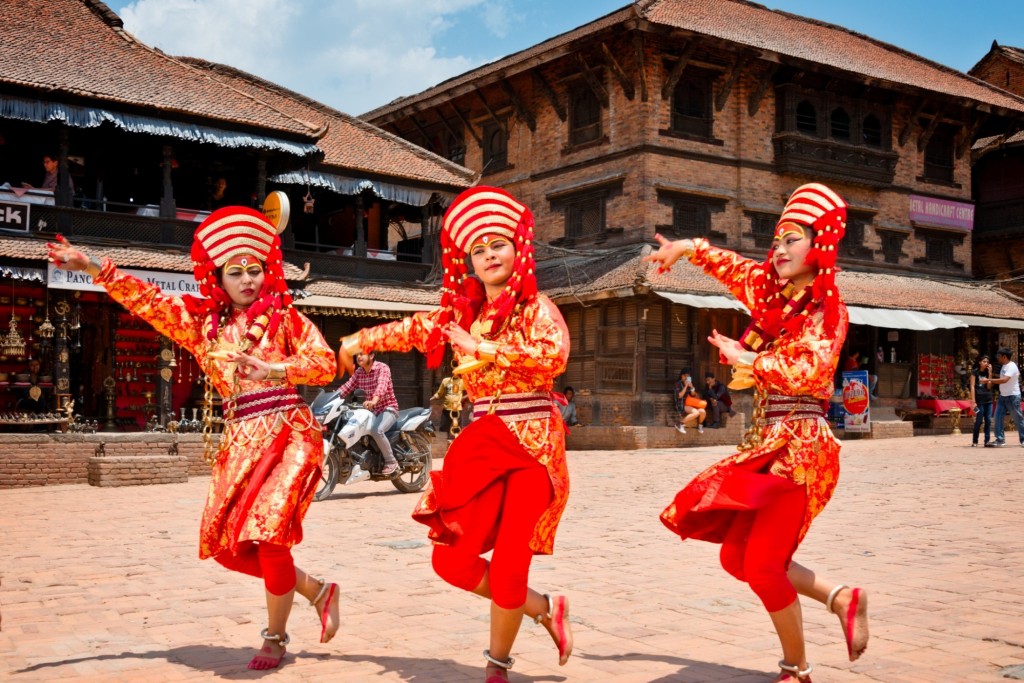
With lush green fields surrounding the core city, the majority of the population of this place relies on agriculture to sustain their daily needs. Nonetheless, Bhaktapur collects 60% of its revenue through tourism. Undoubtedly, the historical art and architecture etched in the walls of the heritage of the city has aided a lot to bring up this data.
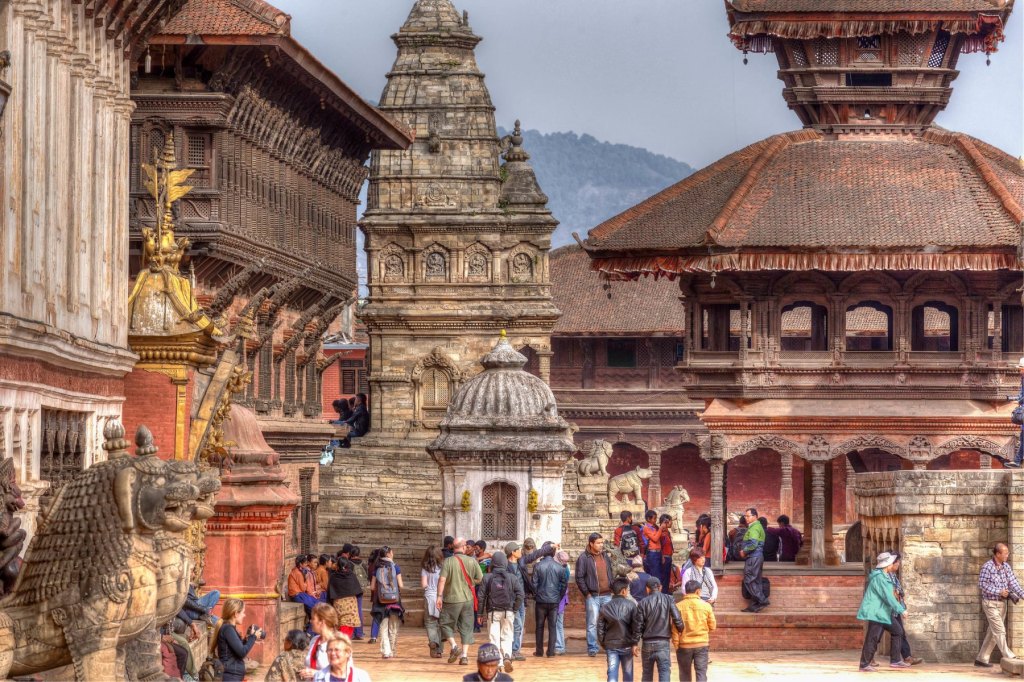
Hosting a population which contains 92% Hindu and 7% Buddhist, Bhaktapur has many temples and Bihars which are related to these two prominent religions. The four popular squares, Bhaktapur Durbar Square, Pottery Square, Taumadi Square and Dattatraya Square, unfolds the rich culture, settlement, history and development that has been present in Bhaktapur since ages. Other than this there are numerous temples, mostly in Pagoda Style in almost every alley. Not only this, there are many significant Bihars such as Lokeswor Mahavihar, PrasannaSheel Mahavihar, Chatu Brahma Mahavihar, Jaya Kriti Mahavihar, Sukra Varna Mahavihar and Dipankar Mahavihar.
Durbar Square – A bookshelf filled with shrines and Chronicles
The word open museum, that perfectly suits this anciently choreographed city Bhaktapur, where you can catch sight of the erections of the last 18th century. One of the most attractive temptations of this charming city is none other than the then royal palace now named after The Bhaktapur durbar square, which was enlisted in UNESCO world heritage site along with the changu Narayan temple.
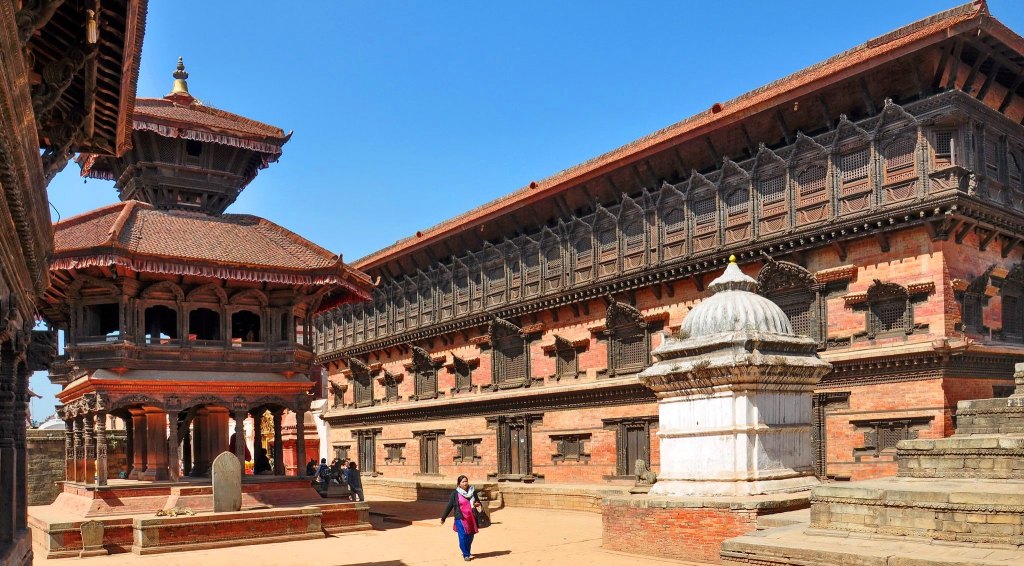
This tiny space holds back the history of the erection of Bhaktapur city as well as the contributions of various kings. You can take a glimpse of various masterpieces erected in different timelines from the starting point of your walk. Yes, you need to walk a little bit in durbar square due to restrictions on vehicles in the durbar area.
As you start your walk from west to east, the very first eye-catching sight is of the stone carving of ugrachandi and Bairava. They are situated at the gate of the current Padma school. With that, you can observe the Gopinath temple on your right-hand side. The next temple in the same direction is Kedarnath, one of the popular temples of the Hindu shrine. Then, you can see a big space surrounded by typical Newari houses, temples, a museum and of course the royal palace. This was not a big space then, the earthquake of 1934 and 1990 made temples and other palaces disappeared under this ground.
The northern side lays toward the national art gallery. This is the only gallery that is treasuring sculptures dated back of Malla periods. The statues of destroyed temples are still in this gallery. Moving toward east will amaze you with the outstanding drafting. The golden gate, also known as the swarnadwar is the last masterpiece left by Malla reign. In spite of that, it is renowned as the best creation of that period. This gate leads you to another masterwork of woodcarvings, a 55 windowed palace and the shrine of taleju temple, the temple which beholds the powerful tantric deity. When you get out of the golden gate, you’ll face the statue of king bhupatindra Malla. This statue shows respect toward taleju rather than showing a king’s self-image.
Besides these monuments, there is still more to explore in durbar square. The vastala Durga temple, Pashupatinath temple, taleju bell, Chyasalin mandap, Siddhi Laxmi Temple, phasidegal temple, stone lions, kumari house ( the house of living goddess), and durbar square hiti(a stone tap) at the end of the row. This spiffing durbar square is full of stories, from monuments to the pillars of the chapel. Each and every piece of art had a spellbinding anecdote. Ergo, this is a perfect place to prosecute your imaginations because the statue cannot deem but you can.
Pottery Square – The Best Spot to Collect Clay Crafts and Paintings
Pottery square as its name means is a square full of pottery works. You can reach there within a few minutes’ walks from Bhaktapur durbar square. This square is not as big as Durbar square but is a hub to do shopping of Nepali handicrafts. The center of this square always gets filled with clay wares and local grains to give them an ace finishing.
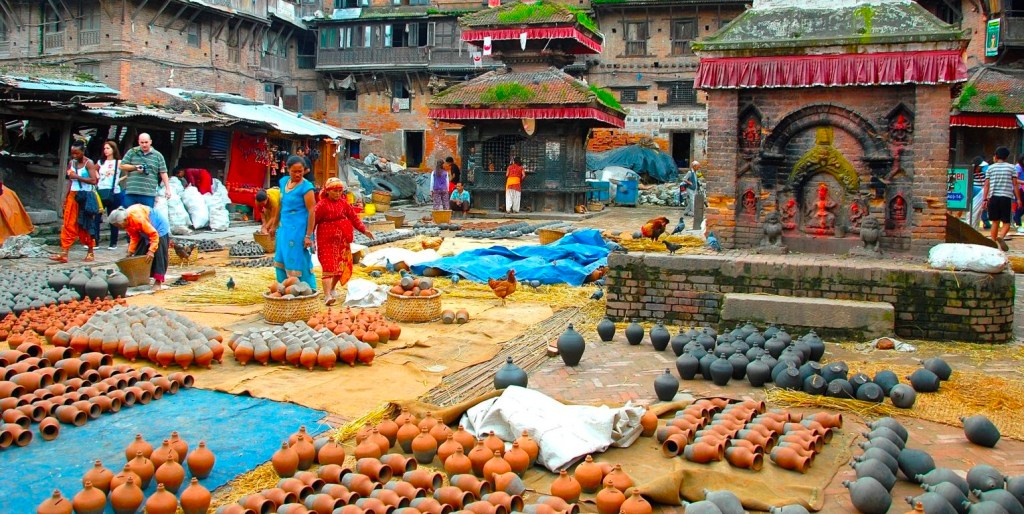
This square basically owns three temples named Ganesh shrine, Vishnu temple, and Jeth Ganesh temple within this small space. Besides that, this place also holds the ceremony of rising and defecting the non-hand lingo during bisket jatra (one of the prestigious jatra of Bhaktapur). There is also a thangka school, you can see the calmness and patients of artists over there as well as the arts. Consequently, you can bring back palpable memories from there.
Taumadi Square -A Place That Holds an Image of the Entire Bhaktapur
Taumadhi Square is on the eastern side of Bhaktapur durbar square. A narrow street filled with souvenirs shops will lead you toward Taumadhi square. Most of the people know this place as panch tale mandir rather than taumadhi square. Due to the situation of the giant five-storied pagoda temple, nyatapola. That is the tallest pagoda temple of Nepal. But people use to call it panch tale mandir.
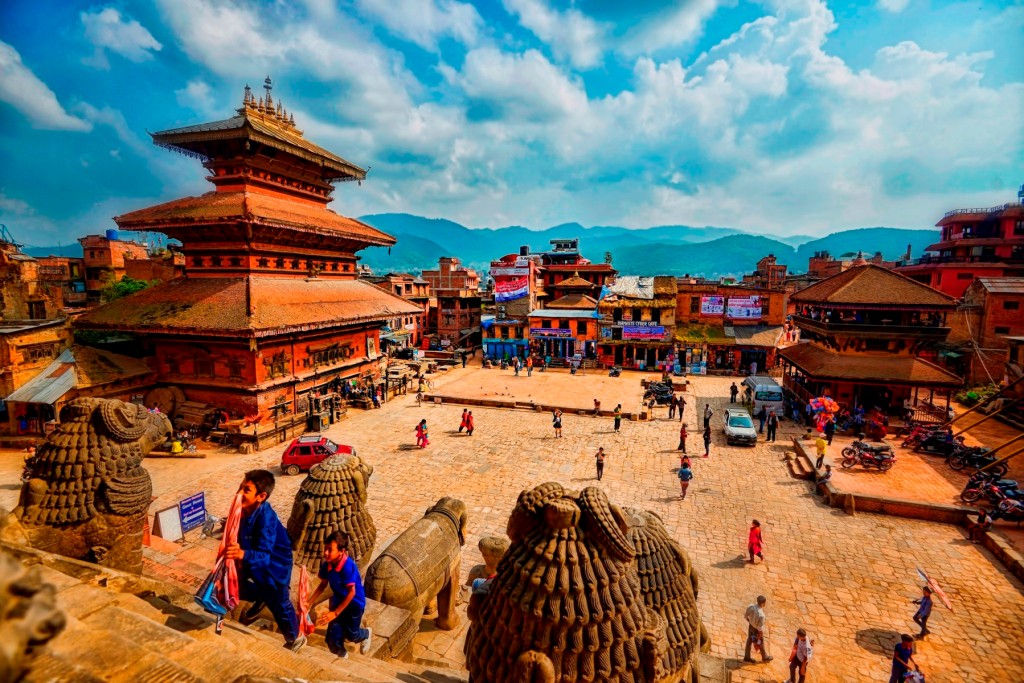
This square allows two-wheelers vehicles in its compound but not four-wheelers.
There is another three-storeyed temple of bhairava, a fierce visage of lord shiva. That is right behind the temple of shiddhilaxmi (nyatapola). There is also a small temple named betal temple following the bhairava temple. As other squares, this square too had a big space, wherein festive season thousands of people muster and make merry the festivals. Ths square also treasures the wooden crafts used in Bisket Jatra and the chariot is also assembled in this place.
There is another temple right in front of the nyatapola temple, call by the name of the Til Madhav Narayan temple. Every year, a Newari ritual called belbivah or ehi is done in a compound of this temple. There are several cafes, souvenirs shops, and restaurants in this area. If you get a walk during morn or in eve, you can clock the locals’ street market too.
Dattatreya Square – The Dignitary Destination for Aesthete and Gluttons
This is the very last square among four charming square. For the reason that it is situated near exist a point in Bhaktapur, most people prefer to visit this place at last. Being the last square to be visited, it again gives a bunch of surprises. This square is named after the Dattatreya temple, where Dattatreya, a part of the trinity is worshipped.
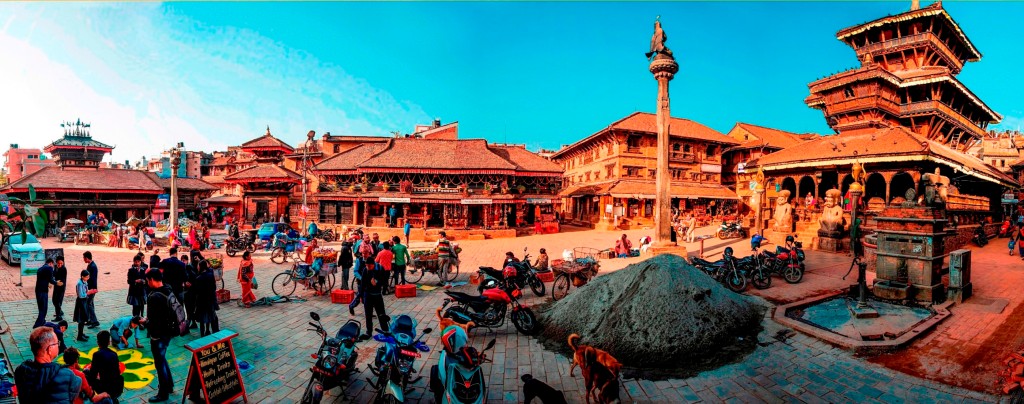
If you walk toward north from this temple, you’ll see a salayan Ganesh temple and behind it a giant manmade pond dedicated to Lord Ganesh. The pond is called Ganesh pokhari. There is another temple in front of the Dattatreya temple, named after bhimsen temple. Bhimsen is said to be the god of trade. There is another franchise stone tap behind this temple of course named bhimsen pokhari.
The Vishnu temple also called as Narayan temple is also set in front of the Dattatreya temple but in the right corner of the temple. These temples had their own consequences, besides these temples, there are two more things that made this square so valuable, The woodcarving museum and the brass and bronze museum. These museums have a large collection of woodcarvings as well as metal craftsmanship of ancient Bhaktapur kingdom respectively.
There is again one spectacular thing left behind in all these things. The very famous peacock window. You need to adopt a narrow street to reach that place, where you can slacken and peacefully adore the decorative window.

